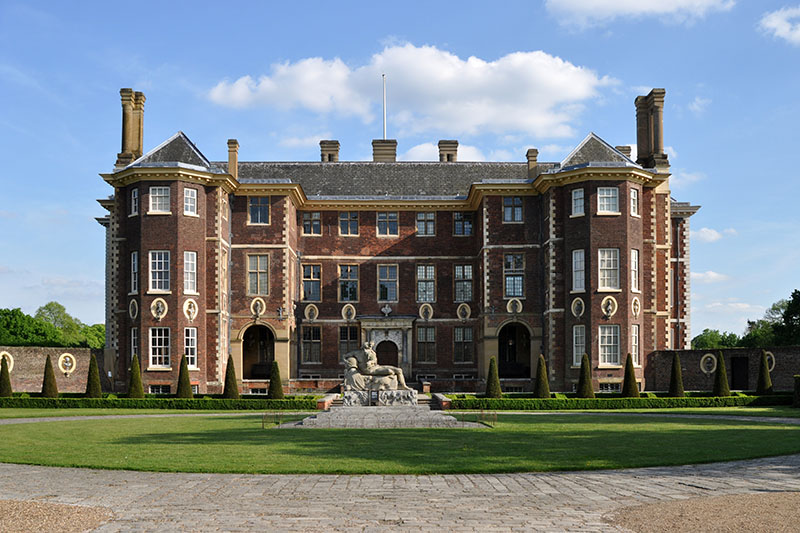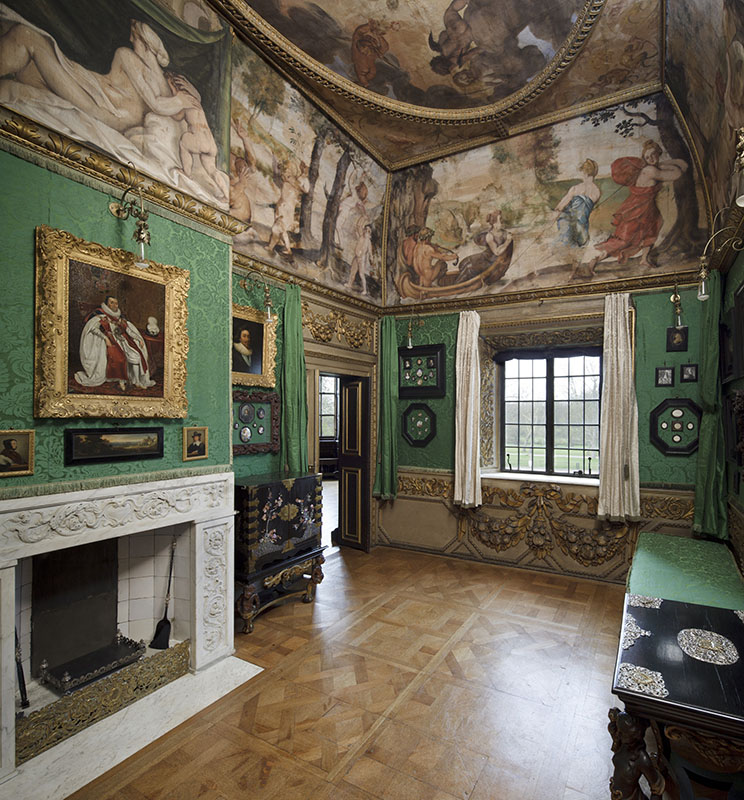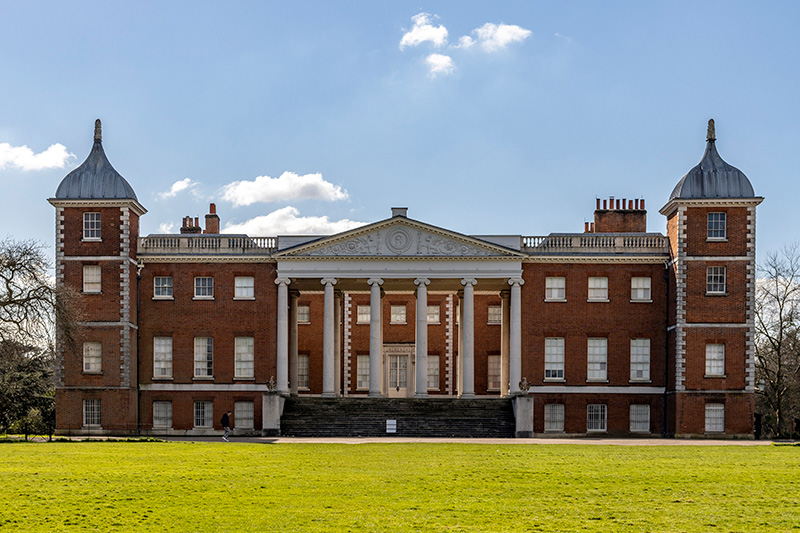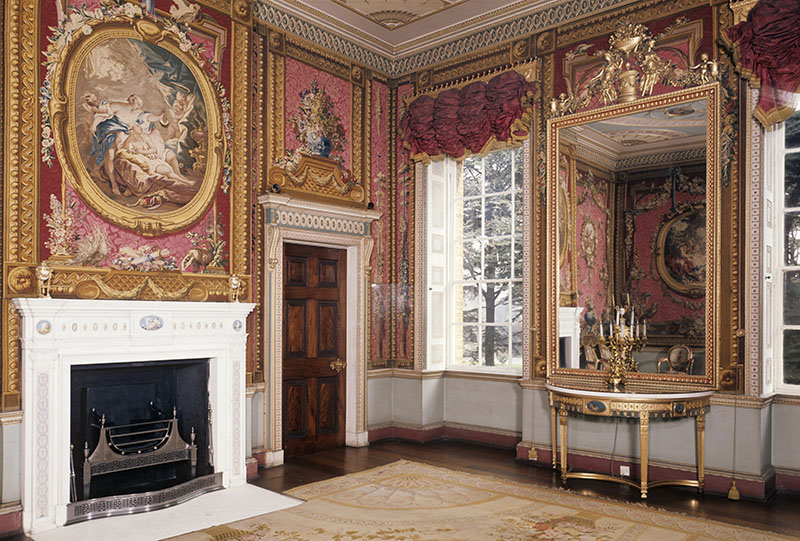Time Travel in the Thames Valley: Ham House and Osterley Park
Click on images to enlarge them and view captions.
by Dr. Megan Wheeler
The National Trust welcomes the Decorative Arts Trust to Ham House and Osterley Park in 2025, with two groups visiting in the spring and one in September. Exemplars of different styles and periods—Ham has been described as the locus classicus of the 17th-century Palladian and Baroque courtly style, and Osterley as one of Robert Adam’s (1728–92) finest surviving Neoclassical interiors—both are remarkable for the near-miraculous presence of much of their original contents.
The Civil War (1642–51) and the Interregnum (1651–60), along with the compulsion felt by successive monarchs to live in palaces in the finest style, left few interiors of the sophisticated and Italianate court of Charles I (1600–49) intact. Ham House (figure 1) is the exception. Built c. 1610 by Sir Thomas Vavasour (1560/1–1620), the residence was leased from 1626 by ardent royalist, courtier, and politician, William Murray, later 1st Earl of Dysart (d. 1655).
Influenced by the sophisticated connoisseurship of the King, Murray remodeled Ham’s interiors in the latest fashion in the 1630s, using some of the King’s craftsmen—possibly under the direction of royal architect Inigo Jones (1573–1652). Much of the plasterwork and carved and painted woodwork is still in situ, most notably in the triumphal Great Staircase and the State Apartment to which it leads. The most important survival is the Green Closet (figure 2), a small room off the Long Gallery that follows the example of the Italian studiolo. This intimate space was designed for the display of smaller pictures and the presentation and safe-keeping of treasures. The current hang of pictures—reinstated by the National Trust in the 1990s—is thought to include 22 that were in the room according to a 1683 inventory and another ten that were found elsewhere in the house that year.
Ham House was enlarged from 1672 by Murray’s remarkable daughter, who succeeded to the Dysart earldom in 1655. She first married Sir Lionel Tollemache, 3rd Baronet (1624–69) and secondly John Maitland, 2nd Earl and 1st Duke of Lauderdale (1616–82). It was the Duke and Duchess of Lauderdale, in particular, who bought the best that money could buy for Ham: textiles woven with metallic thread that still line some of the rooms for which they were made; portraits by leading painters, such as Sir Peter Lely (1618–80); parquetry and marquetry floors that were advanced in England at the time; silver-tipped fire tongs, pokers, and shovels; furniture made by England’s leading craftsmen, like Gerrit Jensen (1635–1715), and from all-over the world, including China and Japan; and unique objects, like a cabinet entirely veneered in ivory, with no parallel anywhere.
These treasures make Ham a place of pilgrimage for enthusiasts of the 17th century, but Osterley Park (figure 3) is a staple for devotees of Robert Adam, the most celebrated British architect and designer of the late 18th century. The fabulously wealthy owners of Osterley Park from 1713 onwards were the Child family, whose fortune derived from banking—Child’s Bank at the “signe of the Marygold” (a motif seen all over Osterley) predated the Bank of England—and involvement in the East India and South Sea companies. A rump of their important early-18th-century collection, including paintings and armorial Chinese export lacquer and porcelain, is still at Osterley, some of it still owned by their descendants, who married into the peerage and the Earldom of Jersey in 1804.
Adam was involved at Osterley between 1761 and 1778, rebuilding part of the house and remodeling and furnishing most of the principal rooms, even updating some of the interiors he had designed in the 1760s again in the 1770s. Many of his drawings and designs for Osterley survive. The enfilade of state rooms, comprising the Drawing Room, Tapestry Room (figure 4), State Bedroom, and Etruscan Room, amply demonstrate the range of Adam’s talents, each room providing a distinct and sympathetic contrast to the last. Characteristically of Adam, each of these rooms was designed as a unified whole, with plaster ceilings, wall treatments, door cases, fireplaces, carpets, and furniture executed as complementary features. Also characteristically, many of the craftsmen who worked at Osterley—plasterer Joseph Rose (1745–99) and painters Antonio Zucchi (1726–95) and Giovanni Battista Cipriani (1727–85)—had worked elsewhere with Adam. Much of the furniture is attributed to the cabinetmaker John Linnell (1729–96), with contributions by Thomas Chippendale (1718–79) and skillful marqueteurs Georg Haupt (1741–84) and Christopher Fuhrlohg (1740–92). These interiors probably inspired Horace Walpole (1717–97), not always so complimentary, to describe Osterley in 1773 as “the palace of palaces,” and also make Osterley so popular with visitors today.
Dr. Megan Wheeler is the Assistant National Curator of Furniture at the National Trust.
A print version of this article was published in The Magazine of the Decorative Arts Trust, one of our most popular member benefits. Join today!




